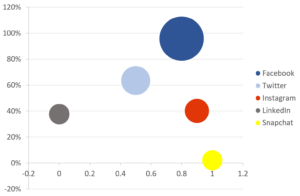The rise of social media
Having a social media strategy has become a must for companies all sizes. The number of active social media users has skyrocketed to 2.3 bn globally, 38m just in the UK. This is quite a feat if we consider that Facebook was only opened to the general public in September 2006 (just over 10 years ago, at the time of publishing this post!).
And not only that, we’re spending more and more time using social media: we’re clocking nearly an hour and a half daily in the UK and, by far, we’re not the country that spends more time in it!
Combine that with some quite cost effective, measurable and easy to set up marketing tools in each of the platforms and no wonder why the marketing spend on social media is also through the roof: $35bn are forecasted in 2017. Mind-blowing!
In this article, I will cover 3 parameters you should consider when defining your social media strategy. As you’ll see, they’re a mix of quantitative and qualitative metrics that will depend hugely on the nature of your business and your objectives. As usual in marketing (and unfortunately!), there’s no ‘one size fits all’. But let’s go into a bit more detail. Here are the three parameters:
1. The reach (size) and engagement of the platform
Social media usage varies a lot from country to country. Not only what platforms are used and the number of people in each one of them but also how they access them, how much time they spend, etc.
A good place to start figuring out what’s going on is the annual report by We are social. This is their 2016 study. It’s quite surprising to see that Western Europe lags significantly behind Asian countries in terms of Social Media usage. Who would have thought, judging by everyone’s addiction to their mobile phones!
So for example, a quick look at the UK figures in that study shows that 47% of the general population uses Facebook, while 20% uses Twitter, 14% Instagram and 10% LinkedIn. We also spend a whopping 1h 29m on social media!
2. The nature of your business
Each social media tries to differentiate from the other ones with specific features and target audiences – although sometimes not very successfully judging by the sheer number of posts on LinkedIn trying to convince others that ‘this is not Facebook!’.
In any case, it’s clear that each platform has its uses, and the attitude of the users is slightly different in each one of them. So, one first division would be B2C and B2B. Are you selling directly to consumers or to other companies? LinkedIn is great for B2B, while Facebook, Instagram and Snapchat have all a clear leaning towards B2C. In the middle of the road, there’s Twitter, that has proven effective on both sides of the equation.
Another thing to consider is if there are any niche platforms addressing your audience. For example, if you’re marketing to students looking at their University options in the UK, The Student Room is a contender to consider. Or if you’re in the beer business, perhaps Untappd is a great way to make some social noise. What about bookworms? There’s a social network for that! GoodReads! The possibilities are nearly endless, so a bit of research has the potential to uncover a very efficient outlet for you.
3. The Return on Investment for each platform
Right, this is a tricky one… The effectiveness or ROI of each platform can vary wildly depending on what you’re measuring. For that reason, it is crucial that you have very clear objectives for your social media strategy, ideally even before you even start using any of the platforms. Is your objective to build a large and engaged audience? Is it to generate leads? Or to raise your brand awareness?
Having said that, we can look at a survey published by eMarketer, indicating that nearly 96% of the Digital Marketers polled consider Facebook as one of their top 3 social media platforms with best ROI. Twitter and Instagram follow with 63.5% and 40.1% respectively. The methodology clearly biases the results (I suspect for example that, to be representative, they polled more B2C marketers than B2C), but it’s a start.
Looking at the numbers above, it’s no surprise that even the mainstream press are calling Facebook and Google a ‘de facto’ duopoly in Digital Marketing. The former dominates the investment in social media, whilst the latter nearly monopolises Search and Display,
Putting it all together: coming up with a social media strategy
As I have discussed a couple of times the approach that I like to follow to build a marketing plan, and social media is no exception. Start with your Situation Analysis, then your Objectives, Strategy, Tactics, Actions and Control.
Once you have decided your Objectives, to come up with a social media strategy you’ll need to look at several parameters or metrics. A good start is to look at the size, engagement, expected ROI of each platform and how they match the nature of your business. A bit of research on niche platforms is also highly recommended.
As always, I hope you found this article helpful and please do not hesitate to reach out for a chat.
Bonus ball
For those who, like me, like graphs, here’s the data above in a nice bubble chart.
The vertical axis represents the ROI as per the eMarketer survey mentioned above.
The horizontal axis represents where the platform sits in a B2B – B2C spectrum.
And the size of the bubble represents the size of the network in the UK, as per the We are social 2016 study. You’re welcome!


Leave a Reply